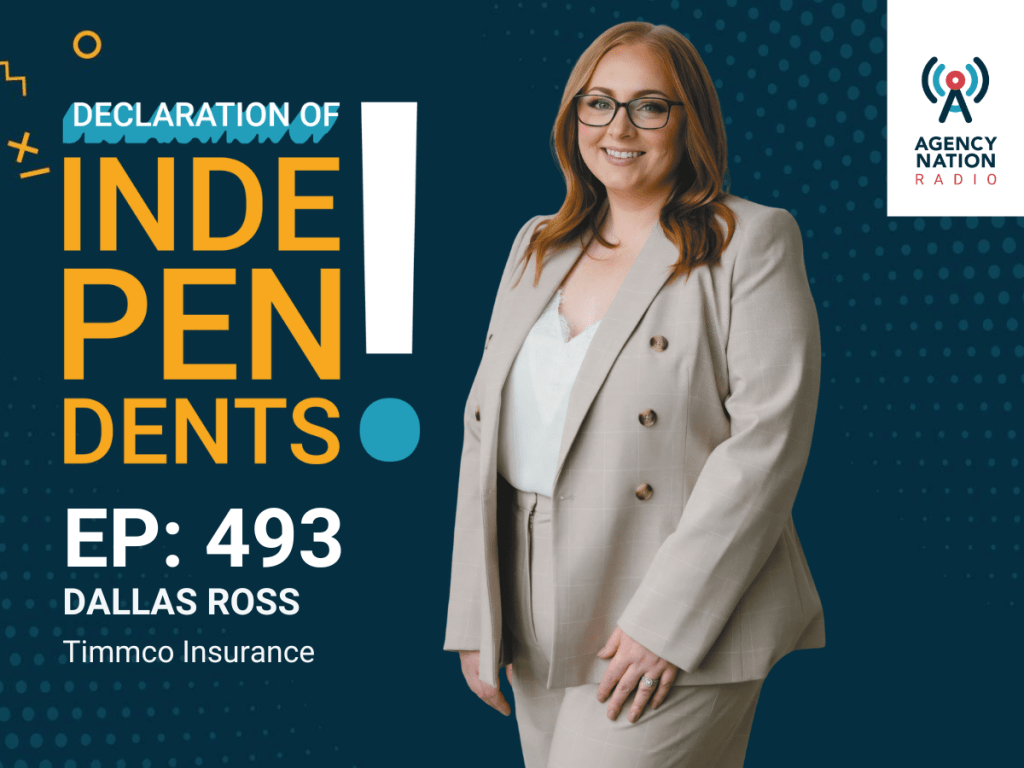What Really Motivates Producers?
By: Susan Hodges
| New business, higher commission. Not enough new business, see rates for renewals go down. Throw in some non-monetary perks. It seems straightforward. But the reality of producer compensation is different. A recent sales study conducted by Reagan Consulting, Inc., of Atlanta found that agency compensation incentives “really do not drive behavior, unless they are perceived to be grossly unfair, in which case they lead to poor results.” The study also found little or no correlation in most cases between agency growth and use of such common compensation approaches as:
What does appear to drive producer behavior and lead to success, the study found, is a combination of high performance standards and accountability to those standards. Under these conditions, sales people who meet or exceed their goals may be paid in a variety of ways. In contrast, producers who fail to meet their goals may see their renewal commissions shaved until they meet new-business minimums. But what are the compensation methods in the real world of agencies that are achieving above-average growth? Increasing the Ante Pritchard and Jerden, Inc., is an Atlanta-based agency with 19 producers. The firm stair-stepped commission rates for new business until 1997, when Jim Bailey joined the company and suggested change. “I didn’t think the stair-stepping model alone was aligned with our corporate models of growth,” says Bailey, who is now agency president. “We weren’t providing incentives for people to keep the business they got the previous year.” The agency subsequently added a year-end, growth-in-book bonus. Under the revised system, producers who met goals both for retaining business and writing new accounts would be paid at top commission rates and earn an annual bonus. Bonus amounts would hinge on the dollar amount of growth produced by each sales person. That wasn’t all. At the start of each fiscal year, five percentage points would be withheld from renewal commissions for all producers. “Once they met minimum requirements for new business, the five points would be restored with a lump-sum payment,” says Bailey. Producers who failed to meet minimum growth requirements two years in a row would have to meet those requirements for the next two years consecutively to regain their original renewal rates. Sixteen years later, Pritchard and Jerden still uses this approach. “True producers like it,” says Bailey. “It’s also a good way to show younger producers coming off part-salary what they can earn as full remuneration if they retain their book and grow.” As a result, the producer compensation strategy is now aligned with the agency’s overall corporate growth strategy. Power Tools RJF, a 29-producer Marsh & McLennan Agency LLC company in Minneapolis, also aligns producer financial compensation with agency growth by paying for growth of book of business. But Tim Fleming, RJF’s president, believes it is the agency’s obligation to provide additional compensation in the form of tools that differentiate RJF from its competitors. In so doing, says Fleming, RJF lays a foundation for its sales people to build ever-growing books of business. “When we think about compensation, we think about providing a sales culture with resources that empower producers,” says Fleming. “The best producers are entrepreneurs at heart who want to break through that million-dollar barrier, and then break through the $2-million barrier that comes next. For us, it’s about creating robust resources to help them do this.” RJF’s “PREVENT Process” is such a resource. Producers use a consistent seven step approach to learn about a client’s business, understand and expose its risks and create solutions to prevent or reduce those risks. Next, an account team creates a stewardship program that shows how the risk-management solutions affected the risk challenges. Says Fleming, “It’s much different from telling clients what we did to just go out and market their business.” To calculate a producer’s financial compensation, RJF examines individual performance. Those who don’t generate the required level of business development experience a reduction in their renewal commission. “Setting minimum new business standards allows us to distinguish between those who really want to do business development and those who want to sit on a book of business and provide technical expertise,” says Fleming. “When everything is working, producers feel well compensated because they’re growing their business, and that has an effect on all divisions of the company. When things aren’t working for a producer, that also has an effect on his team and everyone else.” But producer compensation overall seems to be working at RJF. The agency’s organic growth for 2010 tallied 10.9%, while 2011 organic growth came in at 8.7%. Through 2012, organic growth measured 9.3%. Growth rates for all three years substantially exceed the agency median for each year as tracked by Reagan Consulting, Fleming says, and twice the agency has reached more than double the median number. “I’m really proud of our team,” says Fleming. “This sales platform is real.” One Rate, Undivided Keith Stone, principal, CFO and COO at Gibson Insurance in South Bend, Ind. and three other locations, knows about successful sales platforms. Producers at this 90-person, 20-producer firm have written more than $2 million in new business commissions for each of the past two years. “We’re trying to write 22% of our book to grow,” says Stone. “Growth is paramount in our vision and part of everything we are.” To that end, producers are paid at the same rate for both new and renewal business. Sales of value-added services, such as loss-prevention contracts and fleet management programs, are also compensated at this rate. “We’ve found this really eliminates silo-ing,” says Stone. “People would try to maximize commission and fee income at the expense of selling claims or consulting services because they didn’t get paid as much. When we leveled the playing field, those silos went away and we have a better work team than ever.” Stone has done the math and knows that if the firm went to a 40-25 commission split for new business and renewals, agency profits would rise. “We’d pay our producers less,” he says. “But our system is designed to create growth—and if we can do that, we’ll pay premium compensation for premium growth.” Gibson Insurance has tried various producer-compensation methods over the years and found, in short, that sticks break and carrots grow. “Our people are motivated by two things: money and recognition,” says Stone. “But money isn’t the prime motivator. These people want to win!” To make that happen, the brokerage implemented production teams in 2008. Each of three teams in property-casualty and one team in the benefits department is staffed with “door-openers,” or employees who make appointments; technical people and sales experts. “Our teams have been a huge success,” says Stone. “True producers are freed up to hunt new business and it works. For a firm our size, I’d stack up our new business against anyone’s.” Two Sets of Stairs “There’s not an agent in the country who doesn’t think about producer compensation all the time,” says Jon Loftin, president and COO of MJ Insurance, in Indianapolis. Principals at this 28-producer brokerage use a tiered system to pay for both new and renewal business. The more business sales people write, the more money they take home. Producers can also earn their way into a stock-purchase plan and qualify for an annual incentive trip. “But tiered structures don’t change non-performers into superstars,” says Loftin, “and carrots and sticks don’t drive producer behavior.” Then what does? Loftin says it’s the agency’s ability to provide value. “Risk management, loss analytics and wellness programs are among the tools customers up-market are starting to demand on the basis of value,” he says. “Our challenge is to deliver these services in a mutually beneficial way.” Equip producers with value-added products and services to help them succeed, Loftin advocates. But also weigh total employee expense against the cost of providing the firm’s value proposition. “Where agencies win or lose is the way they combine producer and non-producer expenses,” he says. “In our opinion, comparing your producer expenses as a percentage of revenue against industry benchmarks in isolation doesn’t provide guidance you can act on. Nor can you compare non-producer expenses as a percentage of revenue in isolation. It’s the total employee expense that matters, and it’s up each firm to determine how to balance these expenses based on the value proposition they are delivering.” Susan Hodges is an IA senior contributing writer. | Compensation’s Four-Letter Word It’s a producer compensation tool that’s used at agencies around the country—but don’t ask principals to name it. “Can we say ‘reduced commission levels’ instead?” asked one. “Yes,” said another, “we use them, but we don’t call them that.” But claw-back is the best-known term for a reduction in renewal rates paid to producers who don’t sell enough new business. Under a claw-back, producers who consistently fail to produce a minimum amount of new business see their renewal commission lowered by an average five percentage points. The rate doesn’t go back up until new-business requirements are met. Reagan Consulting’s 2012 Sales Study reported that of 100 firms surveyed, 37% use a renewal-rate claw-back. Yet, growth at firms using claw-backs was reported at 2.4% less than agencies that don’t use them. Study authors theorized two reasons for the lower results: First, firms using claw-backs may have started at a lower performance point when adopting the tool. Second, firms using claw-backs may not expect them to change producer behavior, but instead save commission dollars that can used to hire and develop new producers.
—S.H.
Another Voice Justin Berry, vice president of sales management at MarshBerry, a Willoughby, Ohio-based agency consultancy, acknowledges the complexities involved in setting and reviewing producer compensation. But he suggests starting with a framework: “When considering changes to a producer compensation model, realize that compensation alone won’t produce a long-term outcome,” he says. “What will produce long-term results is reinventing your culture so that everyone in the organization is held accountable.” Also be sure producers know what they are accountable for. “If growth is the agency’s focus, make sure producers know it should be their focus as well,” says Berry. “Tell them where you want them to grow, and give them the tools and capabilities to do it and to keep doing it.” —S.H.
Like Carrier, Like Agency? If 80% of business comes from top 20% of clients, what is happening to the bottom 20%? And how are producers being paid for it? One trend Jim Wochele, sales manager at MarshBerry, is seeing at certain carriers is the creation of small business units (SBUs) designed to handle the bottom 20% of company accounts. “Carriers are very focused on both growth and volume, so they’re looking into this,” says Wochele. “Some agencies are considering this, too.” Jim Bailey, president of Atlanta-based Pritchard and Jerden, Inc., says his agency is pushing minimum account sizes upstream. “We’re doing it because agents might not meet their numbers if they’re working on too many small accounts,” he says. What’s more, he says, Pritchard and Jerden is not set up to handle small accounts efficiently. Adds Bailey, “We do not see carriers decreasing commission rates on small business.” Jon Loftin, president and COO of MJ Insurance, in Indianapolis, says his firm is feeling some pressure in the employee benefits business on smaller group accounts. On the benefits side at the agency, fees for services will become more common. “But we haven’t yet changed any commissions because of carrier behavior,” Loftin says. —S.H. |










